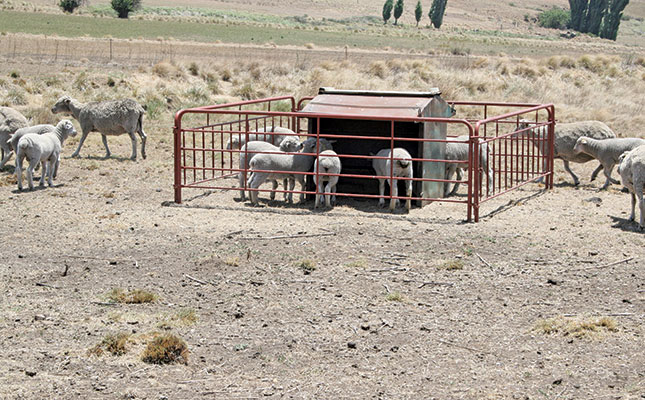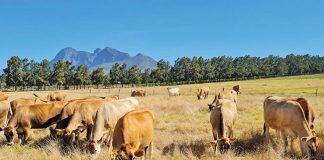
Common livestock illnesses such as coccidiosis, respiratory tract infections such as pneumonia, and conditions such as foot rot all seem to arise during wet weather when bacteria and other organisms are active.
In addition, studies have shown that cattle up to one year old in feedlots are susceptible to gastric illnesses and respiratory tract and lung infections. This is probably due to the cramped conditions found in many feedlots, as well as stress, which can weaken their immune systems.
Similarly, many communal farmers kraal their animals at night to protect them from predators and stock theft. This often creates a stressful environment, particularly if kraals are too small for the number of animals, or there is insufficient clean drinking water and feed.
Coccidiosis: symptoms and treatment
Coccidiosis is especially prevalent in communal areas, and can cause severe diarrhoea. It can also lead to financial losses when young lambs, kids and calves become infected. The watery diarrhoea stains the body around the tail area and may contain little or no blood.
This is a sign that the problem is probably not being caused by worm infestation.
Treatment for coccidiosis is often left until too late, when young animals have already started dying and the parasites have spread to many of the young members of the herd or flock.
Secondary infections such as pneumonia may occur, leading to even more devastating long-term problems.
If you have already vaccinated and dosed your young animals, other illnesses or parasites are unlikely to have caused the diarrhoea. In this case, do the following:
- Treat young animals with the oral medication Sulfazine 16%. Carefully read the instructions, as the weight of the sick animal and the number of treatment days required are all important factors. (Chickens suffering from croup or coccidiosis and rabbits with coccidiosis can also be safely treated with this medication, which can be added to drinking water.)
- Quarantine sick young animals with their mothers until treatment is complete and the animals look visibly better.
- Ensure that sufficient clean drinking water and feed are always available, and make certain there are enough water and feed troughs for other, healthy animals in the kraal.
- Inject animals older than one year with Sulfazine 33⅓%, following the instructions carefully.
Sulfazine can also be used to treat pneumonia (listen for heavy breathing and persistent coughing), foot rot (sore feet with lesions), bacterial scours (also a form of diarrhoea), navel-ill (look for a swollen navel), and joint-ill (swollen and sore leg joints).
Sulfazine medications form part of the sulphonamide medicine group. They are among the oldest medications used in modern livestock farming, but clinical trials have shown they are highly effective. They are also relatively cheap.
With stubborn conditions such as footrot and persistent pneumonia, you might find that animals are not completely cured after Sulfazine has been used according to instructions.
In such cases, follow-up treatments with oxytetracyclines, such as Terramycin, Hi-Tet or Maxitet, or penicillin-based medications can help to finally solve the problem. These medicines are easily obtainable.
Using licks or injections to speed up recovery
After treatment is completed, give the recovering animals added nutrients and vitamins that may have been depleted during the illness.
These can be administered with a multi-lick block or by injecting animals with vitamin-mineral solutions. These should be used with caution, however, and only according to the manufacturer’s instructions.
Shane Brody is involved in project management as part of an outreach programme aimed at transferring skills to communal farmers in parts of the former Ciskei and Transkei.











